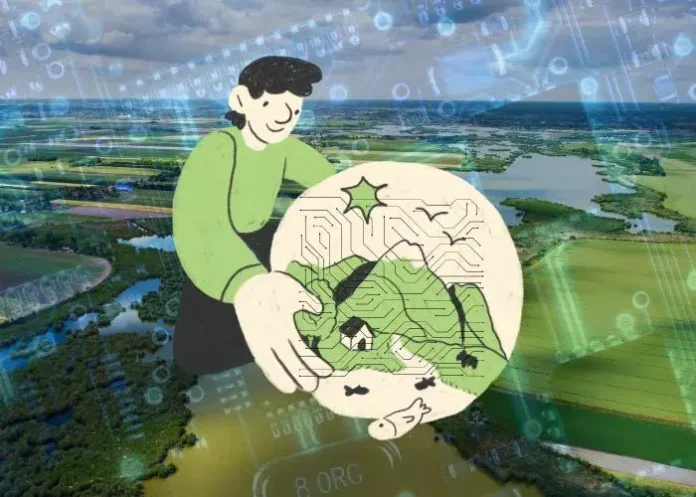Introduction to Biodiversity Preservation
Discussions on biodiversity where more concerned recent historical processes particularly viewed their illustrative examples on an ecosystem perspective. One of the most efficient restoration examples, which relates to the complex structure of ecosystems, is the reintroduction of wolves to Yellowstone National Park in 1995. This turned out to be successful for reasons being that the population of deer went down and it then allowed the vegetation to increase which changed the park’s rivers. These changes fall under the ‘trophic cascade’ were the removal of a species causes various effects in the ecosystem as a result of one species being ramped up in number. With the necessity of effective conservation in light of global warming and increasing loss of biodiversity, it is essential to identify the root causes of biodiversity reduction.
Causes of Biodiversity Loss
Biodiversity loss is caused by many human practises. The data available at the United Nations body shows that, each year, 12% of all plant and animal species fall under the category of endangered. Recklessly felling trees,textile industries, poor agricultural practices, climate change and man’s greed for scarce resources also contribute in no small measure to the problem.
- Land-Use Change (30%): Converting forests and natural landscapes into agricultural land devastates habitats and diminishes biological diversity.
- Overexploitation of Resources (20%): Unsustainable practices such as overfishing, overhunting, and excessive timber harvesting contribute significantly to biodiversity decline.
- Climate Change and Pollution (14%): These factors pose increasing threats to biodiversity, with some studies predicting they may become the primary causes in the near future.
- Invasive Species (11%): Non-native species can disrupt local ecosystems, leading to reduced biodiversity.
Technological Innovations for Biodiversity Conservation
As we confront these challenges, leveraging technology presents an innovative approach to biodiversity conservation. Here are five notable technological advancements:
| Technology | Description | Example of Use |
|---|---|---|
| Genetic Monitoring (eDNA) | Utilizing environmental DNA to identify species without invasive methods. | Swiss scientists collecting eDNA from tree branches using drones. |
| Camera Traps and Drones | Remote monitoring of wildlife through motion-sensing cameras and drones with advanced cameras. | Australian Wildlife Conservancy capturing rare marsupial footage. |
| LiDAR for Forest Mapping | Mapping forest vegetation using laser pulses for accurate ecosystem assessments. | Assessing logging impacts in Indonesia’s tropical forests. |
| Bioacoustics | Recording and analyzing ecosystem sounds to gauge health and biodiversity. | Monitoring Puerto Rico’s coquí llanero frog over ten years. |
| High-Tech Maps and Big Data | Combining satellite imagery and data sensors for large-scale monitoring of ecosystem changes. | Monitoring Great Barrier Reef health with water quality sensors. |
The Importance of Technology in Conservation
Combining telemetric techniques and other progressive ideas is irreplaceable for satisfactorily assessing and apprehending trends in populations of nature. For instance, the employment of molecular technologies known as environmental deoxyribonucleic acid promotes researchers the identification of troubled species as well as the determination of the quality of a host of habitats without disturbing the entities. Equally important, terrestrial and aerial surveillance with nest box cameras or drones, facilitates the observation of behavioral ecology and range of a number of species.
Additionally, LiDAR measures complex structures and canopy cover precisely and helps in setting limits to the renewable harvesting of the forest. Another Novelty, Bioacoustics is a powerful technique that can be used to assess ecosystem conditions in view of the fact that acoustic signals of habitat offer rich information dynamics in terms of species existent. Moreover, the development of modern mapping techniques across all the dimensions: small scale, medium scale, and large scale permits the flexible and rapid reaction of researchers to conservation threats and changes.
Conclusion: The Path Forward
Human induced fast rate of extinction modernizes most forms of its preservation appeal to the intellectual curiosity of our time. Besides increasing the capacity of stakeholders to realize ecological goals, these approaches also enable them to counteract the threats to their biodiversity. Formation of volunteer groups who are willing to participate in ecosystem restoration activities and embrace technology will be essential for human kind if earth’s biological diversity is to be preserved for the future.
In contrast to climate change and the impacts of human activities on the environment, these tools become more contextual, so as to be appreciated, embraced, and applied for the betterment of society.

